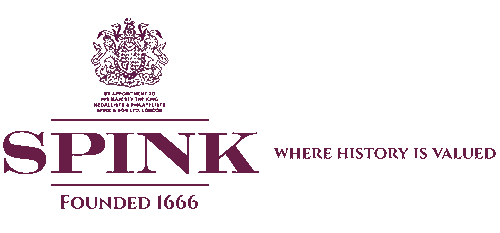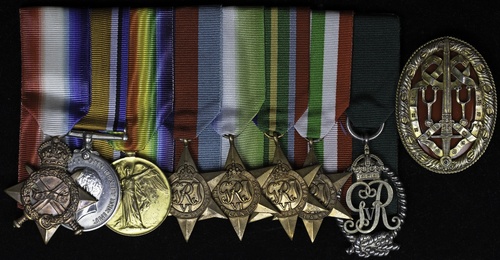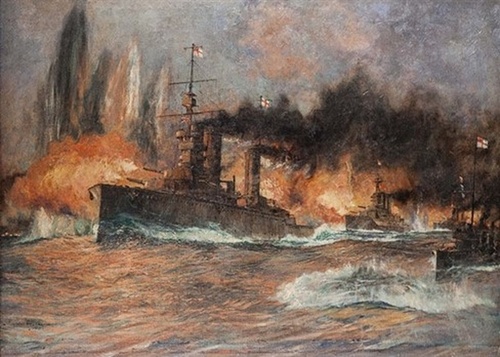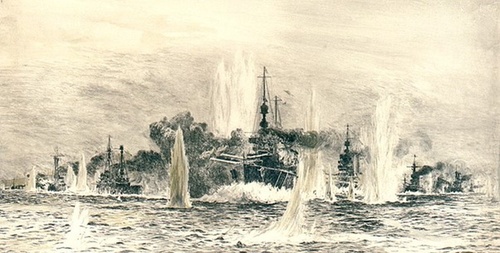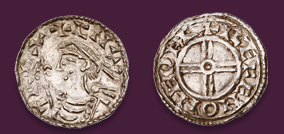Auction: 25111 - Orders, Decorations and Medals - e-Auction
Lot: 656
A fine Second World War Knight Bachelor's group of five awarded to Captain Sir Ernest H. Thornton, R.D., Royal Naval Reserve, who was Commodore of the Union-Castle Line 1941-47
He was also a veteran of the battles of Heligoland Bight, Dogger Bank and Jutland, having served in Sir David Beatty's flagship H.M.S. Lion from the outbreak of hostilities until early 1918: Lion was hit 14 times at Jutland, suffering casualties of 90 killed and 51 wounded, and she was saved from outright destruction by Major Francis Harvey of the Royal Marines, who received a posthumous V.C.
Knight Bachelor's breast Badge, 2nd Type, silver-gilt and enamel, hallmarks for London 1947, in its Royal Mint case of issue; 1914-15 Star (Lieut. E. H. Thornton, R.N.R.); British War and Victory Medals (Lieut. E. H. Thornton, R.N.R.); Royal Naval Reserve Decoration, G.V.R., hallmarks for London 1928, gilt somewhat worn on the first, thus very fine, the remainder good very fine or better (5)
Ernest Hugh Thornton was born in Oxford on 21 January 1884 and first went to sea as an apprentice in 1900 in the four-masted barque, Matterhorn. Later he served in the S.S. Vinebranch, and upon attaining his certificate as First Mate, he joined the Union-Castle Line as Fifth Officer in the S.S. Norman in 1906. Here, then, the commencement of his long and distinguished career with the Union-Castle Line, an association only interrupted by active service in the Great War, when he was called up from the Royal Naval Reserve, having been commissioned as a Sub. Lieutenant in April 1912.
Opening shots
And that service commenced at the end of 1914, when, having attended a gunnery and torpedo course at Vernon, he joined the battle cruiser H.M.S. Lion. And he remained likewise employed until removing to the monitor M. 22 as a Lieutenant in early 1918, thereby sharing in Lion's part at the battles of Heligoland Bight, Dogger Bank, and Jutland.
At Heligoland Bight on 28 August 1914, the Lion and her consorts engaged the German light cruisers Coln and Ariadne, the latter being reduced to a blazing wreck after three close-range salvos, and the former being finished off as Beatty ordered his squadron to retire. Events at the battle of Dogger Bank in January 1915 proved more challenging, Lion duelling with the Blucher, Derfflinger and Seydlitz and being hit 16 times with resultant casualties and serious damage. Of equal interest in terms of forthcoming events at Jutland was her gunnery: she had loosed off 243 rounds but only four of them found their mark.
"There seems to be something wrong with our ships today."
And so, to Jutland itself, when the battle-cruiser fleets of Beatty and Hipper manoeuvred for position on sighting each other at 1428 hours on 31 May 1916. The enemy were the quickest to find the range and Lion took her first hit at 1551 hours. Less than 10 minutes later, a shell from the Lutzow penetrated Lion's midships' Q-turret, killing or seriously wounding all inside. More significant was the risk of Q-turret's magazine igniting, a matter of great concern. As it happened, that risk had been swiftly dealt with by Major Francis Harvey of the Royal Marines, who order the turret to be flooded, even though he was still inside it. He was awarded a posthumous V.C.
Nonetheless, some cordite did ignite, and flames flashed down to the switchboard and other rooms, killing dozens. To add salt to his wounds, Beatty next witnessed the almighty magazine explosion that marked the end of the Queen Mary, the second of his battle cruisers lost that day. Famously, he is said to commented to Captain Chatfield on Lion's bridge, "There seems to be something wrong with our ships today." He did however succeed in leading the German battle cruisers towards Jellicoe and the Grand Fleet.
In all, Lion suffered 14 heavy calibre hits and extensive damage was caused her main deck, funnel and port side, in addition to that inflicted on Q-turret. And apart from the British ships which were sunk, no other suffered more casualties than Lion, that final, grim count amounting to six officers and 84 ratings killed, and another 51 wounded.
Subsequent career - knighthood
Demobilised in 1919, possibly after seeing action in the Baltic in the monitor M. 22, Thornton rejoined the Union-Castle Line and was appointed to the Balmoral Castle. After then serving in various ships of the company as Chief Officer he was appointed to the command of the cargo steamer Hansa in 1929. Five years later found him in command of one of the intermediate passenger ships and, late in 1937, he was appointed to the mail service. He had meanwhile - in January 1934 - been placed on the R.N.R.'s Retired List as a Captain.
His last ship was the Capetown Castle, of 27,000 tons, in which he served from January 1939 to July 1946. During that period, in February 1941, he was promoted to Commodore of the Union-Castle Line fleet, and in 1944 he received the honour of a knighthood for his meritorious services to the Merchant Navy and, more particularly, for his troopship work. In the period of his wartime command of the Capetown Castle - she had been requisitioned by the Admiralty for use as a troopship - she participated in Operation 'Bolero', the build-up of troops in readiness for the Normandy landings: by the time she was returned to the Union-Castle Line, she had steamed 484,000 miles and carried 164,000 troops.
Sir Ernest retired in January 1947, at the age of 63, and settled near Nairobi, Kenya on account of his health. And he died there on 24 November 1951, aged 67; sold with copied research, including confirmation of his additional entitlement to the Atlantic, Pacific and Italy Stars.
Subject to 20% VAT on Buyer’s Premium. For more information please view Terms and Conditions for Buyers.
Sold for
£750
Starting price
£420
